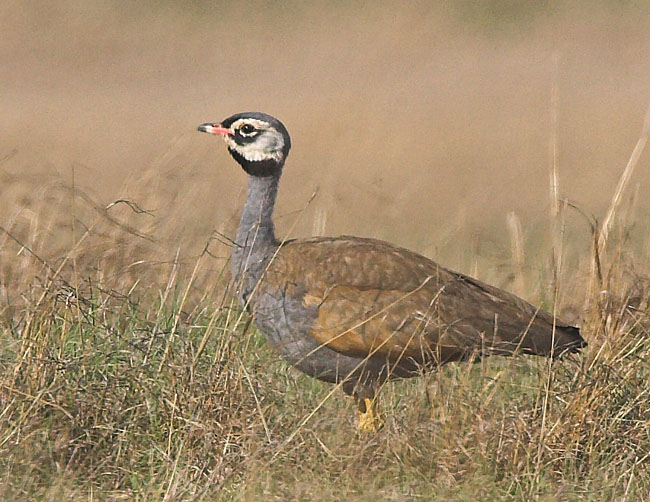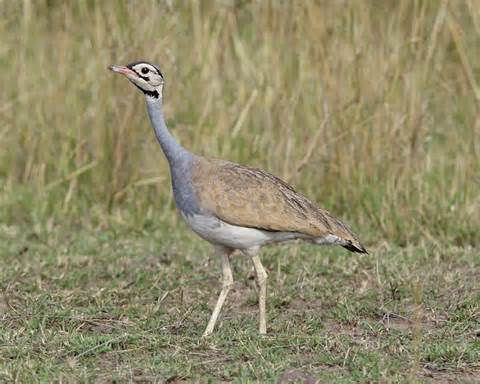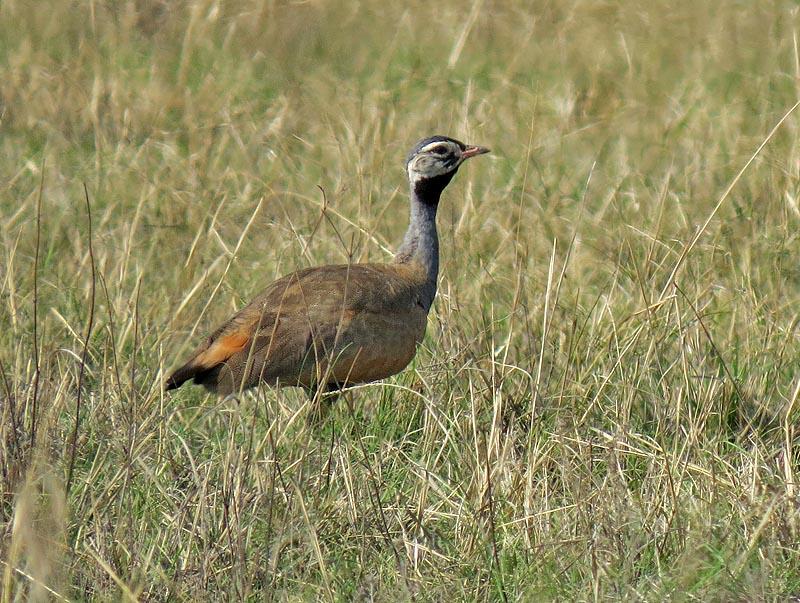
Eupodotis caerulescens
TAXONOMY
Otis caerulescens Vieillot, 1820, “Kaffraria” = eastern Cape
Province. Monotypic.
OTHER COMMON NAMES
English: Blue korhaan; French: Outarde plombйe; German:
Blautrappe; Spanish: Sisуn Azulado.
PHYSICAL CHARACTERISTICS
21.5 in (55 cm); 2.5–3.5 lb (1.1–1.6 kg). Blue-gray neck and
underparts.
DISTRIBUTION
Eastern and central South Africa and Lesotho.
HABITAT
High rolling grasslands and croplands, usually above 4,900 ft
(1,500 m).
BEHAVIOR
Pairs or small groups of up to six appear to be sedentary and
group territorial, the young staying with adults for up to two
years.
FEEDING ECOLOGY AND DIET
Plant matter, invertebrates, and small reptiles. Visits recently
burned grasslands and plowed fields.
REPRODUCTIVE BIOLOGY
Main breeding period October–November, 1–3 eggs laid on
bare scrape in grassland, incubated for 24–28 days. Mature offspring
from last brood probably cooperate in breeding attempts.
CONSERVATION STATUS
Near Threatened. Declining in some areas through agricultural
intensification, but population is thought to exceed 10,000 individuals.
SIGNIFICANCE TO HUMANS
None known.
Other popular Animals
Photo Gallery of - Blue bustard




 Animalia Life
Animalia Life